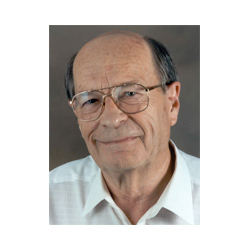
Fletcher: How does the “Transformer Like Amplifier” (did I get the name right?) behave in terms of “crossover distortion?”
Rupert Neve: I think the first thing to say is the transformer like amplifier can be configured with discrete transistors and it would be if it were important. In my 9098 console there are, I believe, last count, some 64 buses.
I use transformers on all the main signal buses but, entirely due to space and weight, I use the TLA transformer like amplifier or auxiliary (auxiliaries) which are not as demanding as the main buses.
However, I also use a technique which offsets the DC at the output of the integrated circuits and so removes that crossover distortion from the zero line and places it at a higher level, usually around 0 dBu. That makes a huge difference to the percentage of distortion.
Tom Borthwick: I have a 5106 console and on an Audio Precision test it goes from 5 Hz to over 150 Hz. This extended bandwidth, was it a concerted effort or just the result of good design?
Rupert Neve: Good question. Well Tom, I’m guessing what you meant was 150 kHz not Hz. The transformers and all the amplifiers in these designs were of that order.
The console mentioned, if I remember correctly, was a broadcast console, one of the later ones. We were paying particular attention to bandwidth. Incidentally, that console was designed by Geoff Watts, one of my earliest colleagues on my design team.
Fletcher: There has been some measure of debate about bandwidth including frequencies above 20 kHz, can we hear them, do they make a difference, etc.
Rupert Neve: OK, Fletch, pin your ears back… In 1977, just after I had sold the company, George Martin called me to say that Air Studios had taken delivery of a Neve console, which did not seem to be giving satisfaction to Geoff Emerick.
In fact, he said that Geoff is unhappy…. engineers from the company, bear in mind that at this point I was not primarily involved, had visited the studio and reported that nothing was wrong. They said that the customer is mad and that the problem will go away if we ignore it long enough.
Well I visited the studio and after careful listening with Geoff, I agreed with him that three panels on this 48 panel console sounded slightly different. We discovered that there was a 3 dB peak at 54 kHz Geoff’s golden ears had perceived that there was a difference.
We found that 3 transformers had been incorrectly wired and it was a matter of minutes to correct this. After which Geoff was happy. And I mean that he relaxed and there was a big smile on his face.
As you can imagine a lot of theories were put forward, but even today I couldn’t tell you how an experienced listener can perceive frequencies of the normal range of hearing.
And following on from this, I was visiting Japan and was invited to the laboratories of Professor Oohashi.
He had discovered that when filters were applied to an audio signal cutting off frequencies of 20 kHz, the brain started to emit electric signals which can be measured and quantified.
These signals were at the frequencies and of the pattern which are associated with frustration and anger. Clearly we discussed this at some length and I also would forward the idea that any frequencies which were not part of the original music, such as quantizing noise produced by compact discs and other digital sources, also produced similar brain waves.
